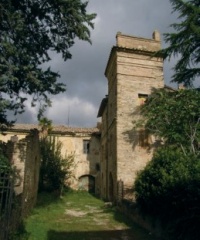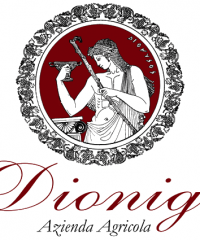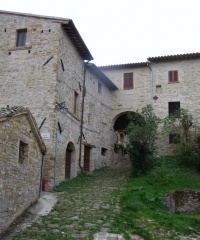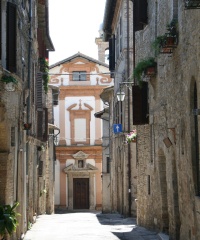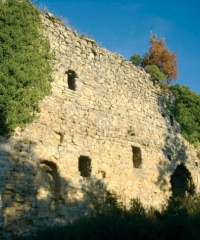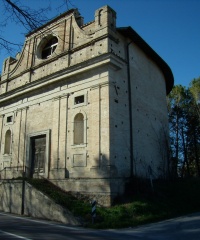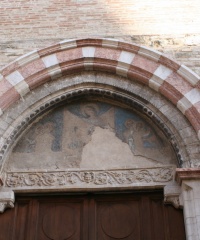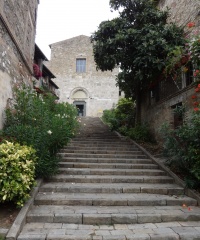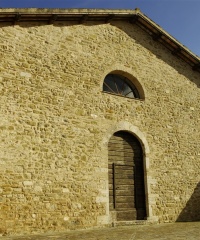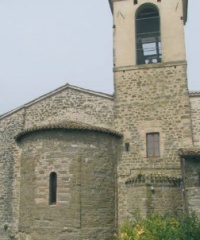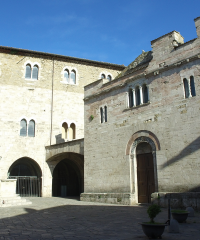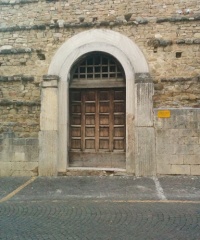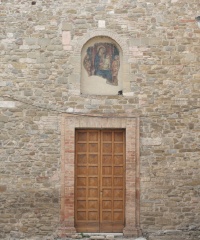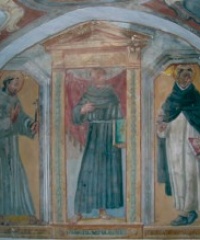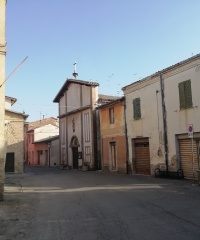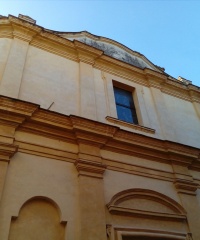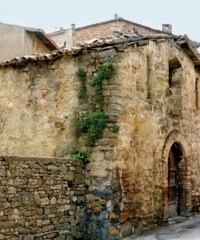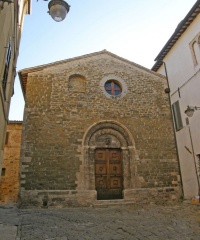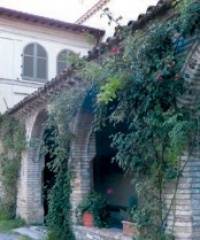The frigidarium remains of the thermal complex, formed by mosaic-decorated niches with black and white tesserae. Recent restorations have revealed traces of the calidarium. The beautiful mosaic, from the 2nd century A.C., of exquisite and refined…
CANTINA DIONIGI Since 1896 Viticulture is a millenary tradition and vocation in the Montefalco area. Pliny the Elder recounts of a fine grape called “Itriola” grown in the surroundings of what is known as Bevagna today and some scholars think he…
Returning to Cantalupo, on the right, turning along the Attone stream and you can climb to Castelbuono. Probably the first settlement dates to the end of the 10th century and the castrum had defensive purposes. Today you can see the remains of a…
In the church, restored in 17th, people can still admire a beautiful altarpiece painted by Andrea Camassei, which depicts the martyrdom of Santa Margherita. Behind the high altar is a fresco painted by Fantino in 1592. The monastery, founded in 1271…
The church has the name of the ancient Benedictine monastery located on the mountain above Bevagna and here transferred in 1555. Inside there is a remarkable frontal in gilded bronze. In front of it, there is a frieze from a tomb of the Republican…
It is an octagonal church, with arcades on the walls of unequal width, located on Via Flaminia towards Foligno. The name derives from the image of the Madonna with the Infant Jesus in her arms holding a rose in his hand, an image that was considered…
It was built on an ancient oratory dedicated to St. George, donated by the Municipality to Blessed Giacomo Bianconi in 1291. As a sign of recognition for the fundamental role he played in the reconstruction of the town, after the siege of the…
Built at the end of the 13th century on the ancient church dedicated to Saint John the Baptist, it stands on the highest place in the city, where it was certainly a Roman temple. The gabled façade is adorned with an elegant rounded polystyle portal,…
The church of San Lorenzo rises behind the perimeter walls of Torre del Colle, which was in the 14th century feud of the Counts of Antinano, precisely on the highest point of the small village. Its modest façade overlooks a pretty square from which…
The church of San Michele Arcangelo has three naves: the one in the left is divided into chapels having at the bottom a fresco depicting the martyrdom of San Sebastiano and on the vault the Evangelists. Near the door there is a Roman capital with…
The epigraph to the right of the portal allows us to date the construction of this building to 1195, due to the master Binello. The unfinished façade consists of travertine blocks in the lower part and Subasio stone blocks in the upper part. A frame…
Today desecrated, the church was dedicated to the patron saint of Bevagna. The unfinished facade has a travertine cladding with fluted pilasters from a Roman building. The church, after various vicissitudes, was used as a cinema until the 1970s.…
It was founded together with the original Augustinian convent, in 1316 near the oldest church of San Pietro. In the tribune and along the walls there are fragments of votive frescoes from the 14th century on several layers. A recent restoration,…
Inside the village there is the fourteenth-century church of Santa Maria, today completely renovated. On the wall, to the left of the central altar, a chapel with frescoes of three saints appears: San Nicola from Tolentino between San Francesco and…
From one of the numerous documents of the Diocesan Historical Archive of Spoleto, it is deduced that the “Villa Cantalupi” was equipped with a wheat dispenser and four churches: Beata Vergine dei Sette Dolori, Sant’ Angelo (San Michele…
Built in the 18th, it preserves inside a beautiful statue of the Risen Christ created at the end of the XVI century; on the high altar the Holy Family painted by Etienne Parrocel in 1738.
Built by Rainaldo I count of Antignano, the little church, now deconsecrated, is the oldest among those preserved: there are news of it since 1198.
The parish was founded by a group of 34 refugee families in Bevagna following the destruction, ordered by the pontiff, of the castles of Antignano, who were faithful to Frederick II of Swabia. The church, now deconsecrated and used as an Auditorium,…
Leaving from Porta Cannara, you arrive at Capro, where on a hill there are the church and the convent of Annunziata. According to Candido Piatti, thy were founded by Benedictine monks from Sassovivo in the 11th century (1078) on the ruins of one of…











